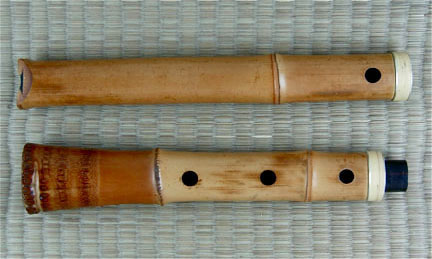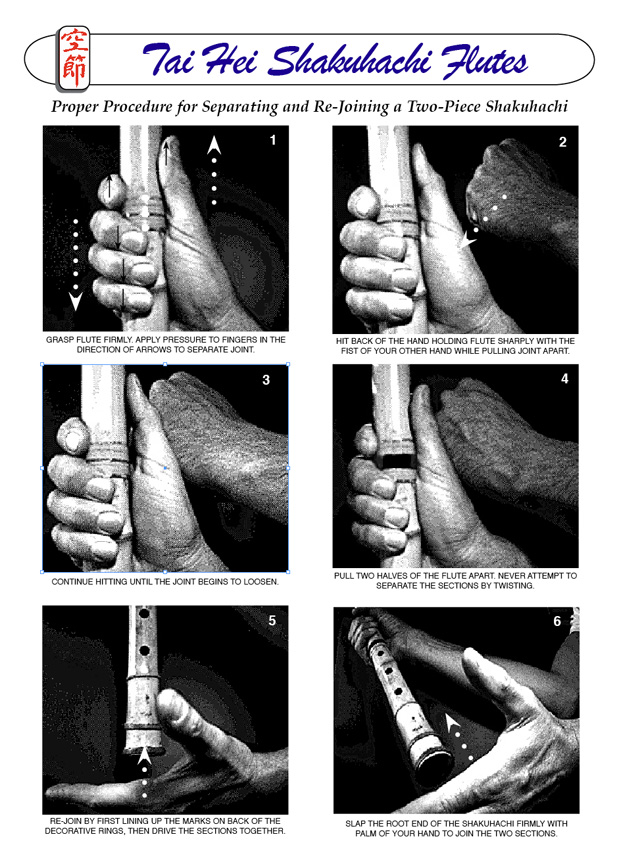Nakatsugi Care Proper Procedure for Separating & Re-Joining |
Nakatsugi Care Proper Procedure for Separating & Re-Joining |

The nakatsugi or middle joint of a two-piece shakuhachi requires attention and care to be properly maintained. This mortisse-and-tenon-type union is precisely proportioned to within a few hundredths of a millimeter in order to fit properly. Since it is made solely of bamboo and lacquer, the nakatsugi will swell and shrink with changes in temperature and humidity causing the joint to feel tight or loose during different seasons of the year. If too tight, the lacquer will wear excessively. If too lose, the shakuhachi may leak air and become unplayable.
It is very important to join and separate the two halves of your shakuhachi in the correct manner. Never twist when putting together or taking apart the two sections of your instrument. The proper techniques are are shown in the instructions below.
If the nakatsugi of your shakuhachi begins to feel tight, simply coat the tenon and socket lightly with petroleum jelly. Wipe off the excess. After aligning the two halves of the flute, partially insert the tenon into the female end of the joint, then slap the root end of the shakuhachi very firmly until the sections are fully joined. If they fail to come completely together, do not force them to do so. This means that the nakasuké needs to be resized by a professional shakuhachi maker.
Lubricating a tight nakatsugi joint will often cause it to feel too loose. In this case, remove some of the lubricant with a paper towel or cloth and try again. Through trial-and-error you will be able to determine the right amount of lubricant to apply. A very fine film of petroleum jelly is often all that is needed. Nakatsugi Lubricant
It is very common for the nakatsugi to become loose over time. A temporary solution is to shim the joint by adding a piece of scotch tape to the tenon or alternately wrap a piece of cigarette paper around it. A permanent fix requires relacqering and should be done only by a professional maker. The lacquer traditionally used to build up a nakatsugi is called urushi. Urushi is very hard, but also very toxic and difficult to work with since it requires heat and moisture to cure. Do not use other synthetic materials such as epoxies or cyanoacrylates as alternates. They are not hard enough and will cause permanent damage to the joint.
It is fine to keep the two sections of your shakuhachi joined when not being played. This will cut down on excessive wear of the nakatsugi. The joint itself is used in making traditional shakuhachi since it provides the maker easier access to the interior of the bamboo when fabricating a precision bore. It also allow the madaké to be altered so that it conforms to the traditional aesthetic for shakuhachi. A section of the raw bamboo is often removed at the joint for sizing purposes. While two-piece instruments have the advantage of being broken apart for traveling, nobekan or one-piece shakuhachi, have none of the problems discussed above.
